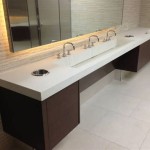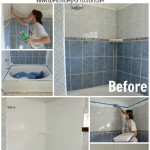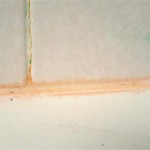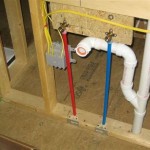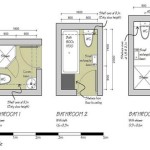300mm Depth Bathroom Vanity Unit: Optimizing Space and Style
The 300mm depth bathroom vanity unit presents an effective solution for spaces that demand efficiency without sacrificing aesthetic appeal. Bathrooms, particularly smaller ones, often require careful consideration of fixture dimensions to maximize functionality and maintain a comfortable environment. The 300mm depth offers a compact footprint, making it a popular choice for cloakrooms, ensuites, and bathrooms where space is at a premium. These units are designed to provide essential storage and a washbasin, all within a streamlined form factor.
Understanding the nuances of these units requires examining various aspects, including their design considerations, material options, installation processes, and the benefits they offer in different bathroom settings. Selecting the right 300mm depth vanity unit involves assessing the bathroom's layout, plumbing configuration, storage needs, and desired style. This article will explore these critical factors to facilitate informed decision-making when choosing a 300mm depth bathroom vanity unit.
Space Optimization Benefits
The primary advantage of a 300mm depth bathroom vanity unit lies in its space-saving capabilities. In compact bathrooms where every centimeter counts, a standard-sized vanity unit might overwhelm the area, restricting movement and creating a cramped feeling. The reduced depth of these units allows for easier navigation and prevents the bathroom from feeling claustrophobic. This is particularly important in cloakrooms or powder rooms, which are often smaller than full-sized bathrooms.
Furthermore, the slim profile enables the incorporation of other essential bathroom fixtures and accessories without compromising the room's overall functionality. For example, a 300mm depth vanity unit might permit the inclusion of a larger shower enclosure or allow for easier access to the toilet. In apartments or older homes where bathroom space is limited, such considerations are crucial for creating a livable and functional environment.
The strategic use of these units can also enhance the visual appeal of a small bathroom. By choosing a wall-mounted 300mm depth vanity unit, the floor space beneath the unit remains visible, creating an illusion of greater spaciousness. This open space also simplifies cleaning and maintenance, preventing the accumulation of dust and debris underneath the vanity.
Material Selection and Durability
The longevity and performance of a 300mm depth bathroom vanity unit heavily depend on the materials used in its construction. A wide array of materials are available, each offering distinct characteristics in terms of durability, aesthetics, and cost. Common materials include MDF (Medium-Density Fiberboard), plywood, solid wood, and various composite materials.
MDF is a widely used material due to its affordability and smooth surface, which is ideal for painting or applying veneers. However, MDF is susceptible to water damage if not properly sealed. Plywood, constructed from layers of wood veneer glued together, offers superior water resistance compared to MDF and is a more durable option. Solid wood provides the most robust and aesthetically pleasing choice but comes at a higher price point. Oak, maple, and walnut are popular solid wood options, offering natural beauty and resistance to wear.
Composite materials, such as PVC (Polyvinyl Chloride) or acrylic, are increasingly popular due to their water resistance and ease of maintenance. These materials are less prone to warping or rotting in humid bathroom environments. The choice of material should correlate with the bathroom’s humidity levels and the user's budget. Investing in high-quality, water-resistant materials is essential for ensuring the vanity unit's longevity and preventing costly repairs or replacements in the future.
The finish applied to the vanity unit also plays a crucial role in its durability and appearance. Painted finishes, wood veneers, and laminate surfaces are commonly used. Painted finishes offer a wide range of color options and can be easily updated, while wood veneers provide the aesthetic appeal of natural wood at a lower cost. Laminate surfaces are durable, water-resistant, and easy to clean, making them a practical choice for busy bathrooms.
Installation Considerations and Plumbing
Proper installation is paramount for the functionality and longevity of a 300mm depth bathroom vanity unit. The installation process involves several key steps, including preparing the wall, connecting the plumbing, and securing the unit in place. Incorrect installation can lead to water leaks, structural instability, and damage to the vanity unit itself.
Before commencing installation, it is crucial to ensure that the wall is structurally sound and capable of supporting the weight of the vanity unit, especially for wall-mounted models. Wall-mounted units require secure anchoring to prevent them from pulling away from the wall. This often involves using appropriate wall anchors or mounting brackets that are designed to bear the weight of the unit and its contents.
Connecting the plumbing is another critical aspect of the installation process. The water supply lines and drainpipe must be properly aligned and connected to prevent leaks. Flexible supply lines and adjustable drainpipes can simplify the connection process, particularly in older homes where the plumbing might not be perfectly aligned. It is advisable to use plumber's tape or pipe sealant to ensure a watertight connection.
The position of the plumbing connections will dictate the type of vanity unit that can be installed. If the plumbing connections are located centrally, a standard vanity unit with a central basin is suitable. However, if the plumbing connections are offset, a vanity unit with an offset basin might be required. Careful planning is essential to ensure that the vanity unit is compatible with the existing plumbing configuration.
For individuals who are not experienced in plumbing and carpentry, it is recommended to hire a professional installer. A professional installer can ensure that the vanity unit is properly installed, plumbed, and secured, preventing potential problems in the future. While professional installation may incur additional costs, it can provide peace of mind and prevent costly repairs down the line.
Design Styles and Aesthetic Integration
300mm depth bathroom vanity units are available in a diverse range of design styles, catering to different aesthetic preferences and bathroom décor schemes. From minimalist designs to more ornate styles, there is a 300mm depth vanity unit to complement any bathroom.
Minimalist designs often feature clean lines, simple shapes, and a neutral color palette. These units are designed to blend seamlessly into the background, allowing other elements of the bathroom to take center stage. Wall-mounted minimalist vanity units are particularly popular for creating a sense of spaciousness and modernity.
Traditional designs typically incorporate more ornate details, such as raised panel doors, decorative hardware, and intricate moldings. These units often feature a warmer color palette and are designed to evoke a sense of timeless elegance. Freestanding traditional vanity units are a classic choice for adding character and charm to a bathroom.
Contemporary designs blend elements of both minimalist and traditional styles, offering a balance of simplicity and sophistication. These units often feature a combination of clean lines and decorative accents, with a focus on functionality and practicality. Contemporary vanity units are available in a wide range of colors and finishes, allowing for customization to suit individual preferences.
The choice of countertop material also contributes significantly to the unit’s overall aesthetic appeal. Granite, marble, quartz, and ceramic are popular countertop options, each offering distinct characteristics in terms of durability, appearance, and cost. Granite and marble provide a luxurious look and feel, while quartz offers a more durable and low-maintenance option. Ceramic countertops are affordable and easy to clean, making them a practical choice for busy bathrooms.
The hardware chosen for the vanity unit, such as knobs, pulls, and faucets, can also enhance its design. These small details can make a significant impact on the overall aesthetic, adding a touch of personality and style. Matching the hardware to other fixtures in the bathroom, such as the showerhead and towel bars, can create a cohesive and harmonious look.
Storage Solutions and Organization
Despite their compact size, 300mm depth bathroom vanity units can provide ample storage space for essential bathroom items. Maximizing storage within these units requires careful planning and the incorporation of clever organizational solutions. The internal design of the vanity unit plays a critical role in its storage capacity and functionality.
Shelves are a common feature in vanity units, providing space for storing towels, toiletries, and other bathroom essentials. Adjustable shelves offer flexibility, allowing users to customize the storage space to suit their specific needs. Drawers are another popular storage option, providing easy access to smaller items such as makeup, razors, and toothbrushes.
The inclusion of internal organizers, such as dividers, trays, and baskets, can further enhance the storage capacity of the vanity unit. These organizers help to keep items neatly arranged and easily accessible. Drawer dividers are particularly useful for separating different types of items, preventing clutter and maximizing space.
Wall-mounted vanity units offer the added benefit of freeing up floor space, which can be used for storing larger items such as laundry baskets or cleaning supplies. The open space beneath the vanity unit also makes it easier to clean the floor, preventing the accumulation of dust and debris.
The use of vertical space can also enhance storage capacity. Tall, narrow cabinets can be installed alongside the vanity unit to provide additional storage for towels, toiletries, and other bathroom essentials. These cabinets can be designed to match the style of the vanity unit, creating a cohesive and aesthetically pleasing look.
Mirrored cabinets are another excellent storage solution for small bathrooms. These cabinets provide both storage and a mirror, maximizing functionality in a compact space. Mirrored cabinets can be recessed into the wall to save space or mounted on the surface for easy installation.
In conclusion, the 300mm depth bathroom vanity unit offers a versatile and practical solution for optimizing space in bathrooms of all sizes. By carefully considering the design, materials, installation, and storage options, it is possible to choose a vanity unit that meets both functional and aesthetic requirements.

Cove 6 Piece Vanity Unit Bathroom Suite High Gloss White Depth 300mm Quality And Evaluation Are Very Good Cloakroom Suites

300mm Vanity Unit Cove Victorian Plumbing

Cove 6 Piece Vanity Unit Bathroom Suite High Gloss White Depth 300mm Quality And Evaluation Are Very Good Cloakroom Suites

Jenson Compact 500 X 300mm Wall Hung Vanity Unit Polymarble Basin Bathlab Co

Venice 665 Gloss White Vanity With Matt Black Handles Unit Depth 300mm Victorian Plumbing

Cloakroom Compact Vanity Unit Wenge Marea Small Bathroom Sink Cabinet

Jenson Compact 500 X 300mm Wall Hung Vanity Unit Polymarble Basin Bathlab Co

Impakt Bathroom Tall Boy Unit 300mm Deep 1900mm High Cheeky Bathrooms

Venice 665 Gloss White Vanity With Matt Black Handles Unit Depth 300mm Victorian Plumbing

Cloakroom Compact Vanity Unit Wenge Marea Small Bathroom Sink Cabinet


